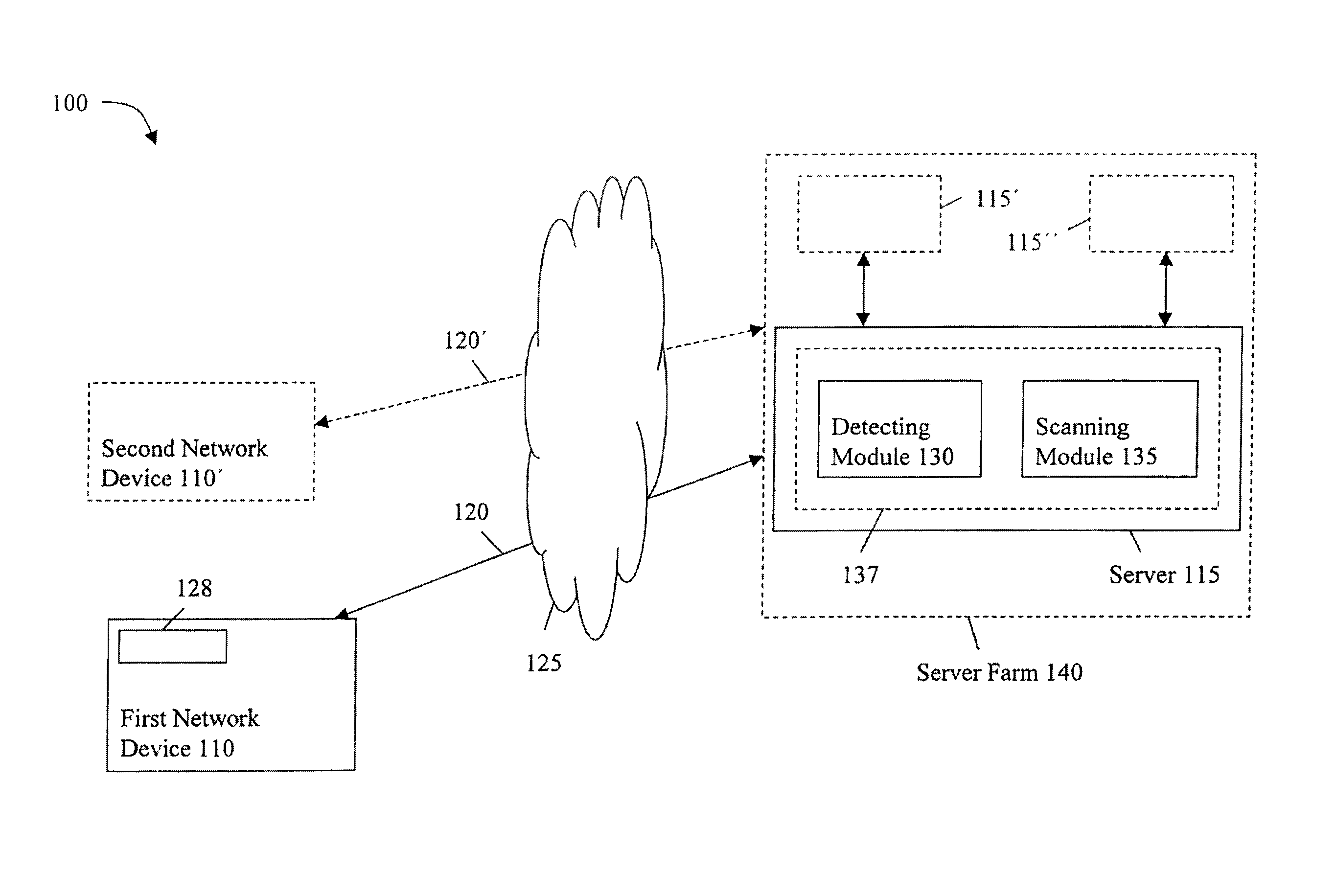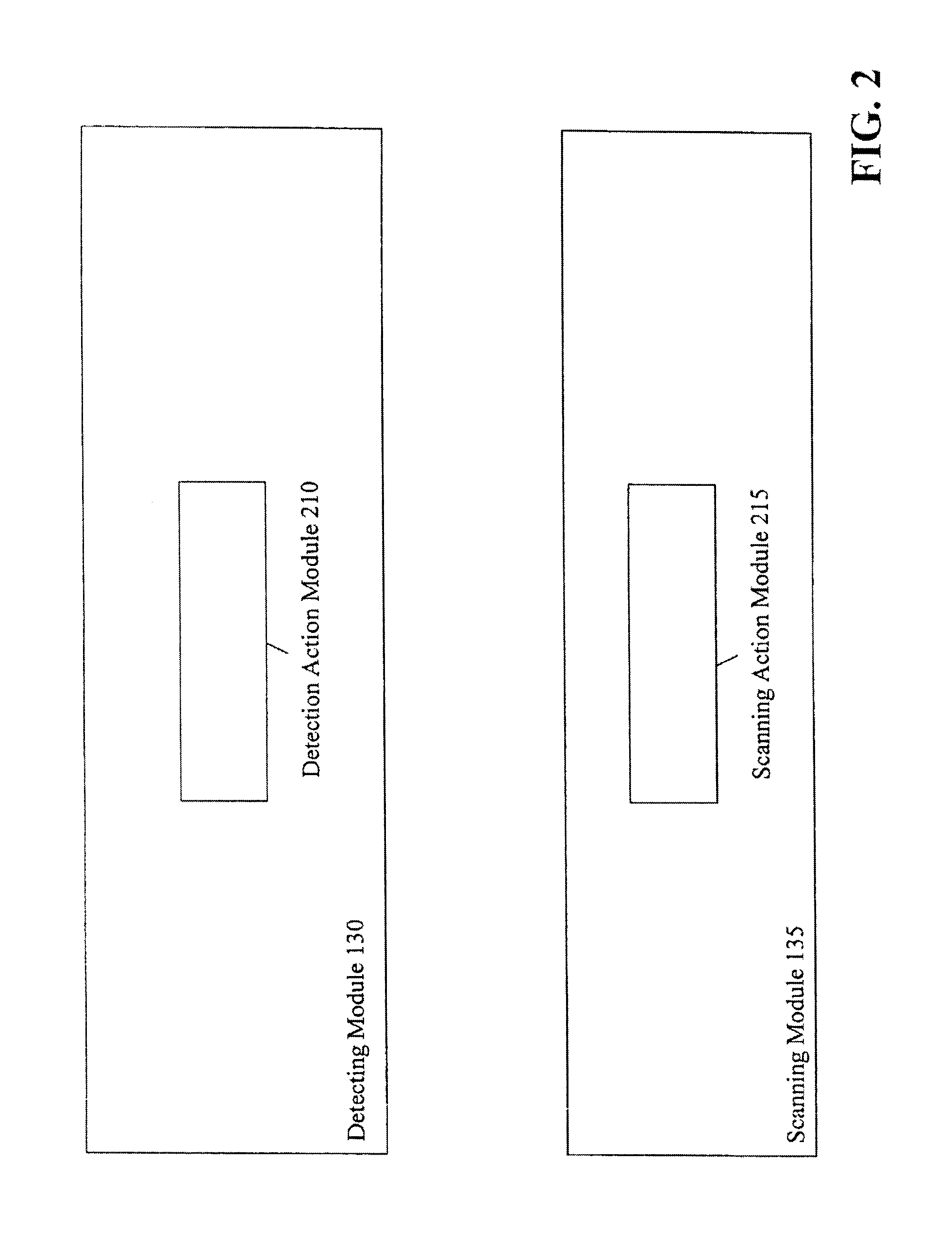Method and system for scanning network devices
a network device and network technology, applied in the field of network device scanning, can solve the problems of increasing the use of networks, putting computers at a greater risk, and destroying data stored on computers communicating over networks such as the world wide web, so as to reduce the implementation time and increase the scalability, coverage and responsiveness of scanning.
- Summary
- Abstract
- Description
- Claims
- Application Information
AI Technical Summary
Benefits of technology
Problems solved by technology
Method used
Image
Examples
Embodiment Construction
[0026]FIG. 1 illustrates a block diagram of an embodiment of a security system 100. The security system 100 includes a first network device 110 communicating with a server 115. The first network device 110 can be any personal computer, smart or dumb terminal, network computer, wireless device (e.g., cellular telephone or personal digital assistant), information appliance, workstation, minicomputer, mainframe computer or other computing device. The first network device 110 can also include a network infrastructure device, such as a router, switch, or firewall.
[0027]The first network device 110 is in communication with the server 115 over a first network device-server communication channel 120. Example embodiments of the communication channel 120 include standard telephone lines, LAN or WAN links (e.g., T1, T3, 56 kb, X.25), broadband connections (ISDN, Frame Relay, ATM), and wireless connections. The connections over the communication channel 120 can be established using a variety of...
PUM
 Login to View More
Login to View More Abstract
Description
Claims
Application Information
 Login to View More
Login to View More - R&D
- Intellectual Property
- Life Sciences
- Materials
- Tech Scout
- Unparalleled Data Quality
- Higher Quality Content
- 60% Fewer Hallucinations
Browse by: Latest US Patents, China's latest patents, Technical Efficacy Thesaurus, Application Domain, Technology Topic, Popular Technical Reports.
© 2025 PatSnap. All rights reserved.Legal|Privacy policy|Modern Slavery Act Transparency Statement|Sitemap|About US| Contact US: help@patsnap.com



